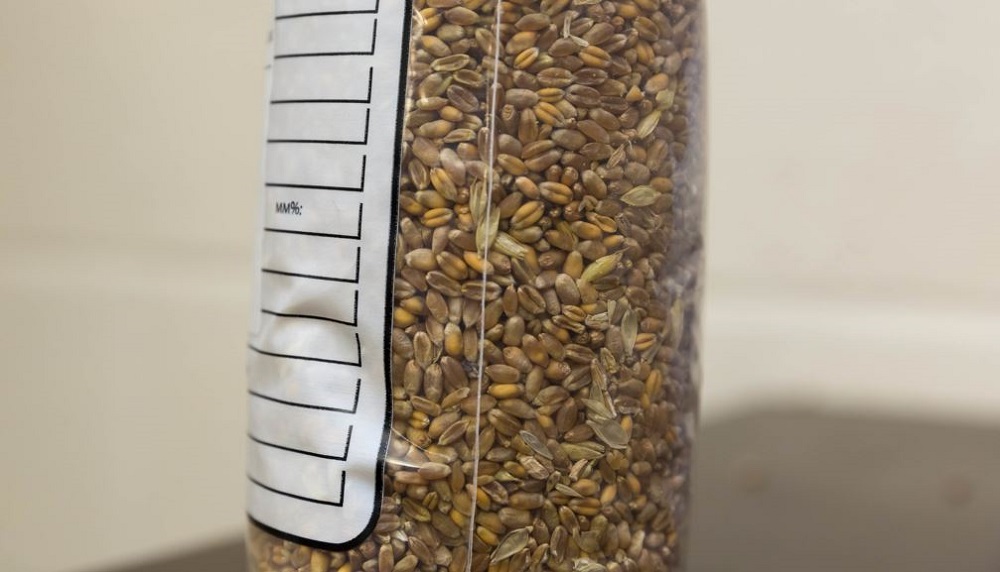- Home
- Knowledge library
- Highly heritable wheat quality traits
Highly heritable wheat quality traits
Some quality characteristics, such as protein concentration, specific weight and Hagberg Falling Number (HFN), are highly heritable in wheat. Learn about the genetic (varietal) and other factors that affect these traits, as well as the typical market specifications.
Growth guides for wheat, barley and oilseed rape
Grain protein content
Varietal influence: High
Other influences: Nitrogen (N) rate and timing, grain yield, weather
Protein concentration (and protein quality) is highly dependent on variety and determines the variety’s end-use suitability. However, weather and crop management are also influential.
Grain protein is related directly to grain N. High concentrations of grain protein can arise either from large N uptake or poor starch formation during grain filling. Providing both are fertilised optimally, first wheats tend to have grain percentages below those of second wheats. Protein contents of first wheats are usually diluted by their greater yields.
Conversely, factors that reduce yield without affecting N transport to grain, such as drought, early lodging or some diseases, may raise protein. Powdery mildew is an exception, as it lowers protein percentage by interfering with N transport.
Grain specific weight
Varietal influence: High
Other influences: Delays to harvest, lodging
Crops with a large grain weight tend to have a high specific weight. It is also influenced by:
- The range of grain sizes
- The density of individual grains
- Characteristics of grain surfaces that affect packing
Specific weight partly depends on grain size, grain density and grain packing characteristics. It indicates the weight of grain that can be loaded onto lorries or ships. A typical requirement for milling or export is 76 kg/hl. Samples below this requirement are likely to incur price penalties or be excluded from the intended market. Late harvests can reduce specific weight through weathering.
Specific weight can be measured by hand using a chondrometer. Grain is, however, routinely measured at intake labs, using an NIR grain analyser, which can also give readings for moisture content and protein concentration. Grains can also be sent to a specialist lab for protein determination by methods such as Dumas or Kjeldahl.
Grain Hagberg Falling Number (HFN)
Varietal influence: High
Other influences: Delays to harvest, lodging, pests
Hagberg Falling Number (HFN) reflects the gelling properties of flour made from whole grain. It is a measure of hot-paste viscosity, expressed as the number of seconds (s) taken for a plunger to fall through a wholemeal water suspension. The minimum value possible is 60 s. The minimum value required for breadmaking is 250 s, and for soft wheat for export, 220 s. Lower viscosity results from starch breakdown by alpha-amylase. This enzyme may form during or after ripening.
Enzyme activity is associated with initiation of germination and hence with sprouting. Alpha-amylase may also form in cool, wet weather during ripening, even in the absence of visible sprouting. Green grains on late tillers or grains damaged by orange blossom midge also have high alpha-amylase.
Effects of husbandry on HFN tend to be small and inconsistent compared to the effects of variety and weather.
Varietal differences in HFN are indicated in the AHDB Recommended Lists. Group 1 wheats are generally classed as ‘very high’.
There is an international standardised method for determining HFN. This requires specialist equipment, which many intake labs have.
By GS91, management can only protect against losses of yield or quality.
Depending on intended market and likely risks, consider:
- Harvesting as soon as the crop is ripe
- Assessing HFN pre-harvest on hand-threshed, air-dried grain
- Harvesting at high moisture to optimise chances of high HFN
Milling wheat quality
UK bread-making wheats comprise the majority of millers’ requirements. On the Recommended Lists (RL), UKFM Group 1 and 2 varieties are likely meet milling quality thresholds, as well as the agronomic needs of growers. Demand for the UKFM Group 3 wheats also remains strong, as their unique protein quality is needed to produce a range of flour types and products, for which domestic and export demand continues to grow. Group 4 soft wheats may also have a specific use in some flours and these varieties can find a milling home. At present, over half of the grain produced in the UK becomes animal feed – directly or as co-products from other end uses. Generally, these are classified as ‘group 4’ varieties.
|
Typical specifications for milling wheat |
UKFM Group 1 |
UKFM Group 2 |
UKFM Group 3 |
|
Minimum specific weight (kg/hl) |
76 |
76 |
74 |
|
Maximum moisture content (%) |
15 |
15 |
15 |
|
Maximum admix (%) |
2 |
2 |
2 |
|
Minimum Hagberg Falling Number (HFN; s) |
250 |
250 |
220 |
|
Protein content (%) |
13.0 |
12.5 |
11.5 |
Note: UK Flour Millers (UKFM) represents the UK milling industry.
Overseas buyers have different requirements to domestic buyers (growing cereals for exports)
 AHDB
AHDB
Topics:
Sectors:
Tags:

